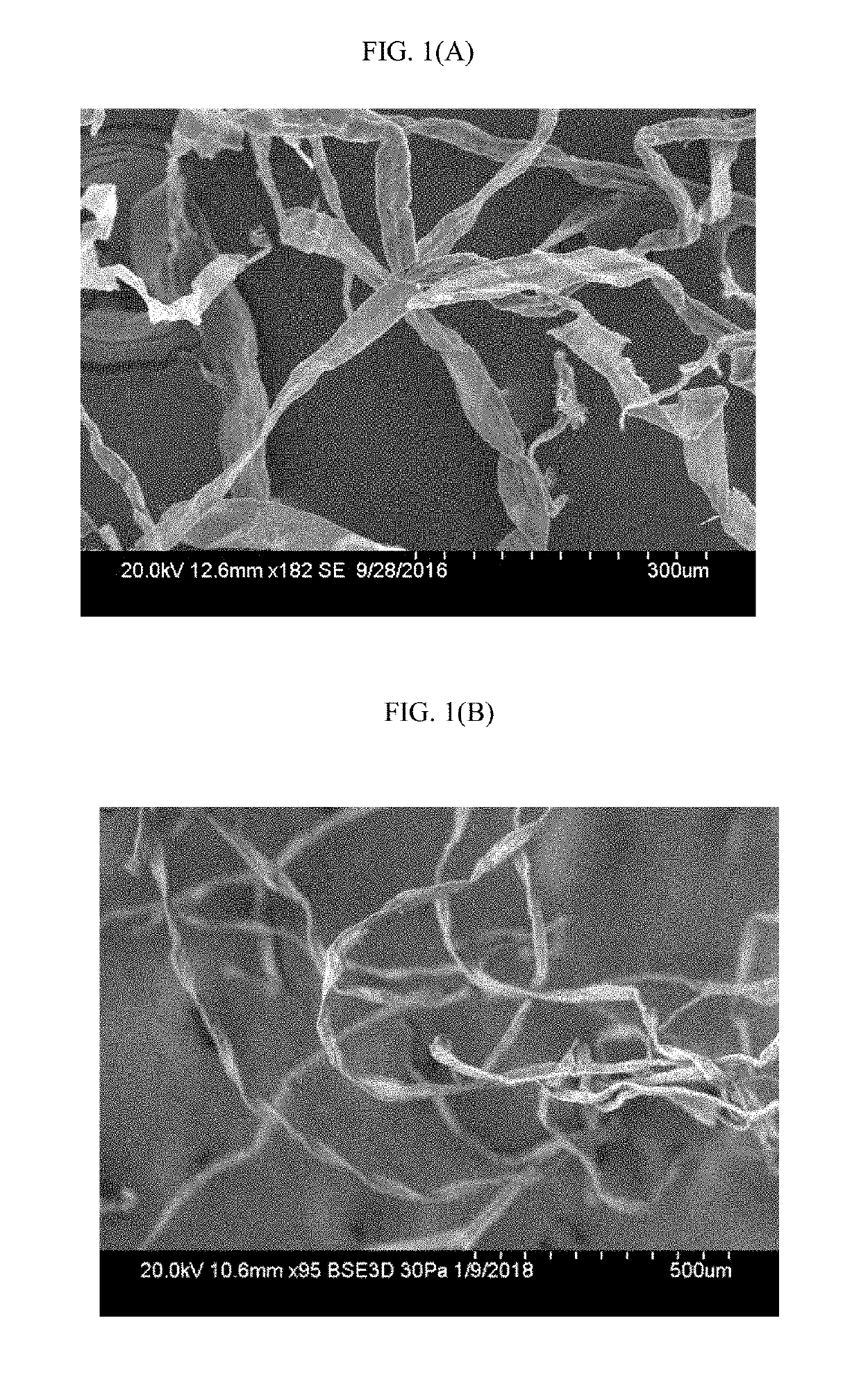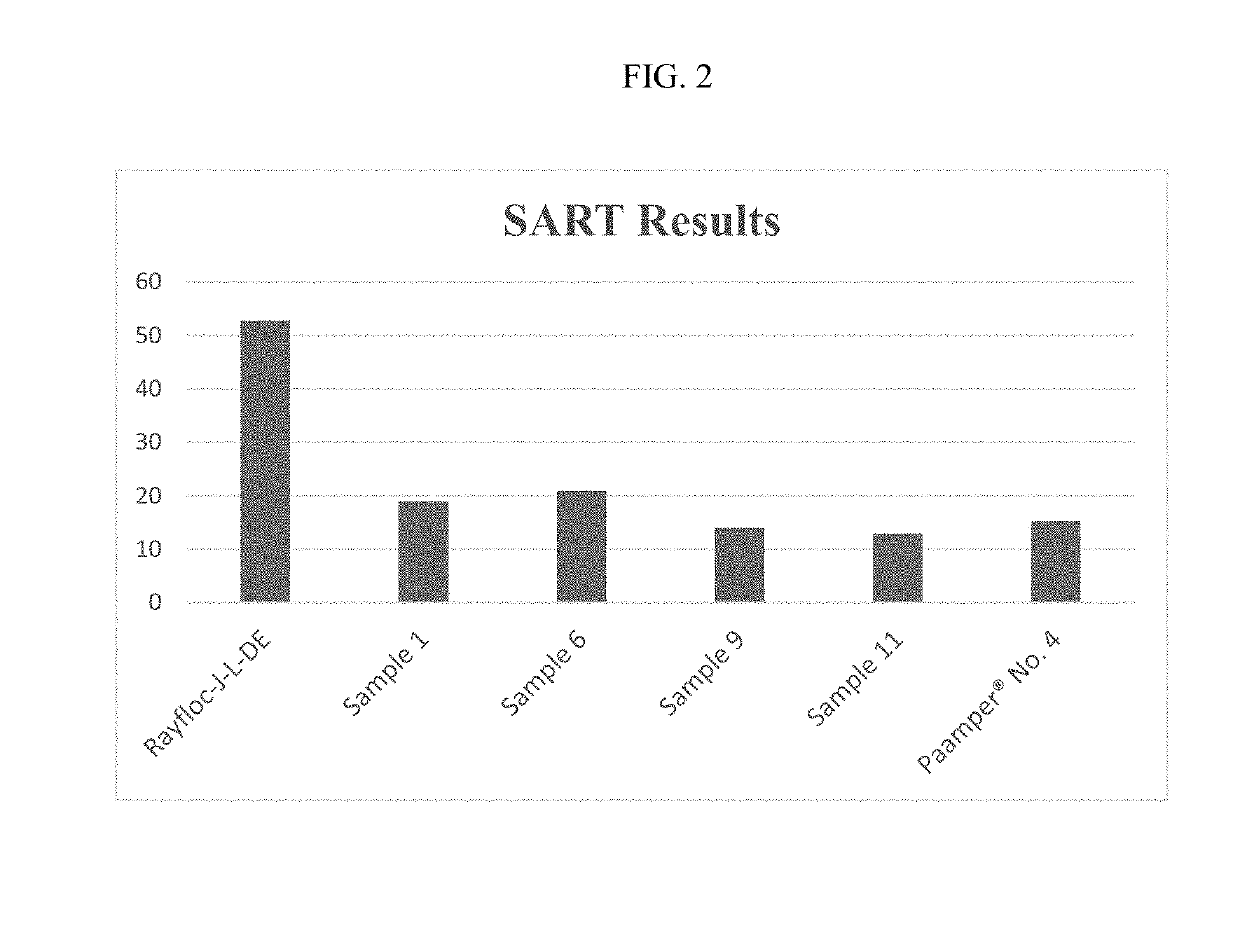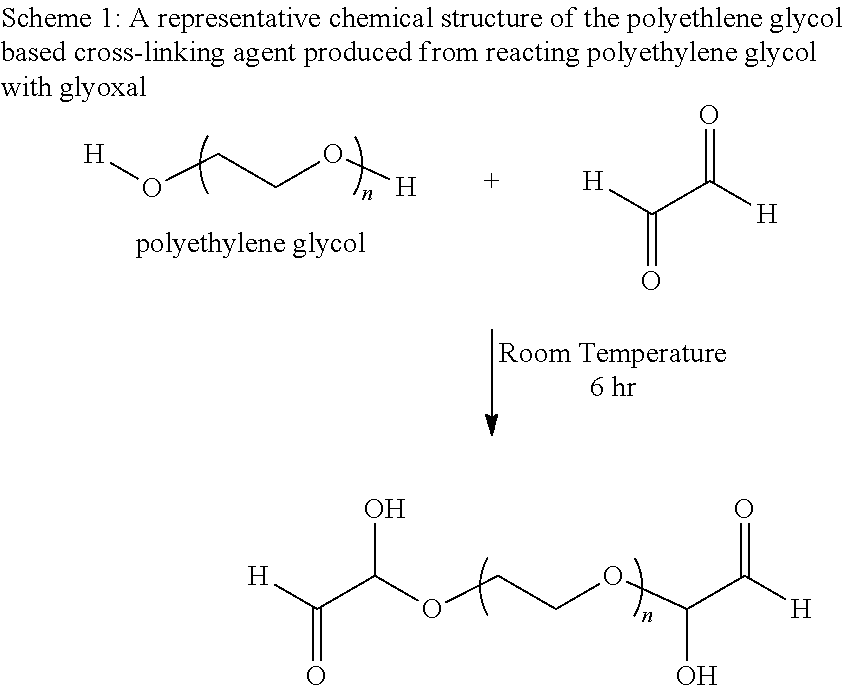Polyalkylene glycol based reagent with aldehyde end groups suitable for making cellulosic fibers with modified morphology
- Summary
- Abstract
- Description
- Claims
- Application Information
AI Technical Summary
Benefits of technology
Problems solved by technology
Method used
Image
Examples
example 1
[0065]To a solution of glyoxal in water (50.0 g of 40% solution, 0.34 mol) was added polyethylene glycol diglycidyl ether (10.0 g, MW===500 g / mol, 0.02 mol). The produced solution was stirred at room temperature until a clear viscous solution of polyethylene glycol based glyoxal was obtained (12 hr). Water was then added to adjust the total weight of the solution to 1.0 kg (final concentration of polyethylene glycol based glyoxal reagent is 3.0% by weight).
[0066]The produced solution was added to a plastic tray, a sheet of Rayfloc-J-LDE (12×12 inch2, basis weight 680 gsm) was dipped into the solution then pressed to achieve the desired level of polyethylene glycol based glyoxal reagent on pulp (about 3.0 wt. %). Several sheets were prepared in the same manner and dried in an oven as shown in Table I. Prepared sheets of transfer fibers were defiberized by feeding them through a hammermill and produced fluff was evaluated by hanging cell test and fiber quality test. Test results are s...
example 2
[0067]To a solution of glyoxal in water (50.0 g of 40% solution, 0.34 mol) was added polyethylene glycol diglycidyl ether (10.0 g, MW=500 g / mol, 0.02 mol). The produced solution was stirred at room temperature until a clear viscous solution of polyethylene glycol based glyoxal was obtained (12 hr). Water was then added to adjust the total weight of the solution to 1.0 kg (final concentration of polyethylene glycol based glyoxal is 3.0%).
[0068]The produced solution was added to a plastic container, a sample of Rayfloc-J-LDE (never dried pulp) was suspended in the solution at 4% consistency, mixed for 5 min, sheeted (12×12 inch2, basis weight 680 gsm) and pressed to a 100% liquid pick up (3% of polyethylene glycol based glyoxal on pulp). Several samples were prepared in the same manner, dried and cured in a one step process at various temperatures for fixed period as shown in Table III. Prepared sheets of transfer fibers were defiberized by feeding them through a hammermill and evalua...
example 3
[0069]To a 40% solution of glyoxal in water (50.0 g of 40% solution, 0.34 mol) was added polypropylene glycol-400 (10.0 g, 0.025 mol). The produced solution was stirred at room temperature until a clear viscous solution was obtained (4 hr). Water was added to adjust the total weight of the solution to 1.0 kg (final concentration of dual function reagent is 3.0%). The produced solution was added to a plastic tray, a sheet of Rayfloc-J-LDE (12×12 inch2, basis weight 680 gsm) was dipped in the solution then pressed to achieve the desired level of reagent on pulp (about 3.0 wt. %). Several sheets were prepared in the same manner and dried in an oven at 70° C. then cured at temperature shown in Table V. Prepared sheets of transfer fibers were defiberized by feeding them through a hammermill and evaluated by hanging cell test and fiber quality test. Test results are summarized in Table V.
TABLE VHanging cell test results (g / g)DryingRetentionSampleTemperatureFreeAbsorbencyafterNo.° C. (Time...
PUM
| Property | Measurement | Unit |
|---|---|---|
| Temperature | aaaaa | aaaaa |
| Time | aaaaa | aaaaa |
| Percent by mass | aaaaa | aaaaa |
Abstract
Description
Claims
Application Information
 Login to View More
Login to View More - R&D
- Intellectual Property
- Life Sciences
- Materials
- Tech Scout
- Unparalleled Data Quality
- Higher Quality Content
- 60% Fewer Hallucinations
Browse by: Latest US Patents, China's latest patents, Technical Efficacy Thesaurus, Application Domain, Technology Topic, Popular Technical Reports.
© 2025 PatSnap. All rights reserved.Legal|Privacy policy|Modern Slavery Act Transparency Statement|Sitemap|About US| Contact US: help@patsnap.com



